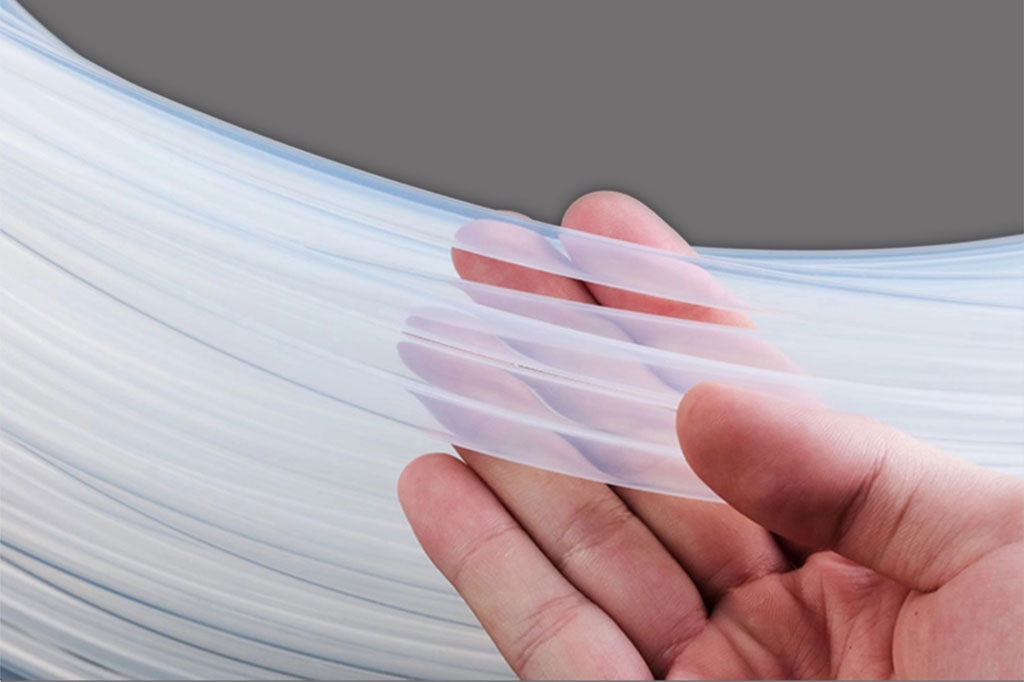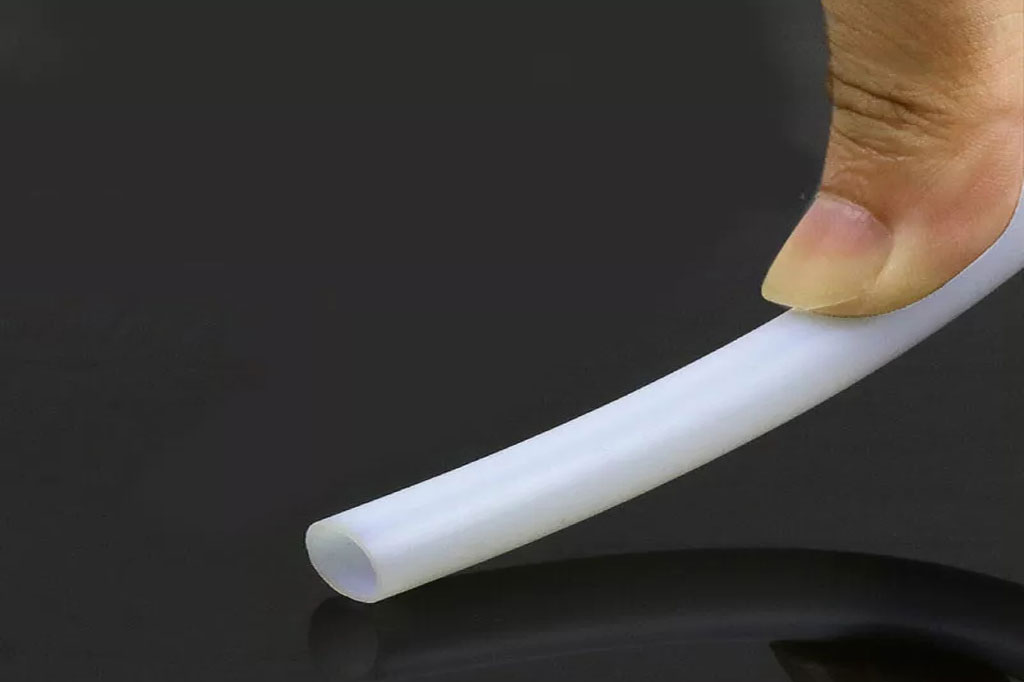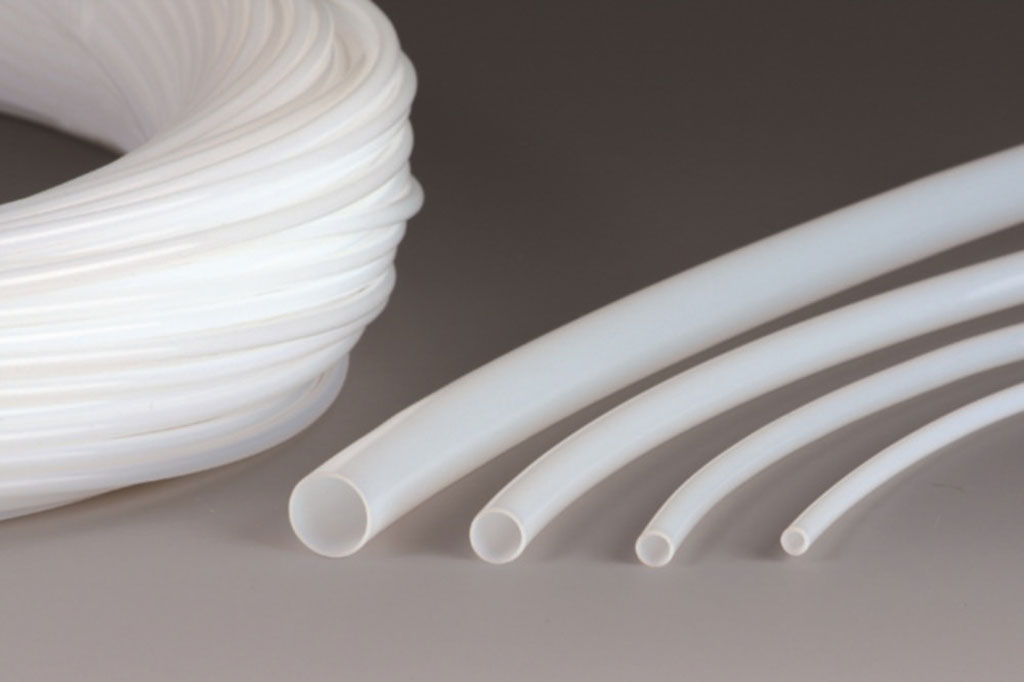PTFE tubing is available in two primary forms: flexible and rigid, each tailored to specific application needs.
This article explores the key differences between flexible and rigid PTFE tubing, examines their respective strengths and limitations, and offers guidance on selecting the most suitable type for your project.
1. Defining Flexible and Rigid PTFE Tubing
Flexible PTFE Tubing
Flexible PTFE tubing is manufactured using an extrusion process that creates a continuous, thin-walled tube. It can be bent by hand or routed through complex pathways without kinking, making it ideal for dynamic systems or confined spaces.
Rigid PTFE Tubing
Rigid PTFE tubing is produced through a ram-extrusion process that yields a thicker wall and stiffer tube. Though still more pliable than many other polymers, its primary characteristic is dimensional stability and resistance to deformation under pressure.
2. Material Properties Comparison
| Property | Flexible PTFE Tubing | Rigid PTFE Tubing |
|---|---|---|
| Wall Thickness | Typically 0.5–2.0 mm | Typically 1.5–5.0 mm |
| Minimum Bend Radius | As low as 5× outer diameter | Generally ≥10× outer diameter |
| Tensile Strength | Lower (due to thinner walls) | Higher (thicker walls) |
| Pressure Rating | Moderate (at room temperature) | Higher (especially at lower T) |
| Temperature Range | –200 °C to +260 °C | –200 °C to +260 °C |
| Chemical Resistance | Excellent | Excellent |
| Dielectric Strength | ~60 kV/mm | ~60 kV/mm |
| Abrasion Resistance | Moderate | Higher |
3. Flexible PTFE Tubing

3.1 Manufacturing & Structure
Flexible PTFE tubing is typically ram or paste-extruded to produce a thin-walled, smooth bore tube. It often features an annealed treatment to relieve internal stresses, enabling the tube to be coiled or bent without fracturing.
3.2 Advantages
- Easy Installation: Can be routed around bends and obstacles without additional fittings.
- Lightweight: Lower wall thickness reduces overall system weight.
- Vibration Absorption: Flexibility helps damp mechanical vibrations and reduces stress on fittings.
- Cost-Effective: Generally less material per unit length, lowering raw-material costs.
3.3 Limitations
- Pressure Constraints: Thin walls limit maximum working pressure, especially at elevated temperatures.
- Kink Risk: Sharp bends below the minimum bend radius may cause kinking and flow restriction.
- Dimensional Tolerance: Slightly wider tolerances can affect precise fluid control applications.
3.4 Common Applications
- Liquid chromatography and analytical instrumentation
- Pneumatic and hydraulic pilot lines
- Chemical sampling lines
- Encapsulation of wiring in robotics
4. Rigid PTFE Tubing

4.1 Manufacturing & Structure
Rigid PTFE tubing is extruded in thicker walls and then stretch-formed or mandrel-drawn to achieve tighter dimensional tolerances. Some grades undergo post-extrusion sintering to further stabilize the material.
4.2 Advantages
- High Pressure Capability: Thicker walls withstand significantly higher internal pressures, even at elevated temperatures.
- Precise Dimensions: Tighter tolerances enable accurate flow control and fittings compatibility.
- Structural Support: Maintains shape under mechanical loads and reduces the need for external support.
- Low Permeability: Thicker walls provide reduced gas and vapor permeation, beneficial for sensitive applications.
4.3 Limitations
- Reduced Flexibility: Larger bend radius requires fittings or bends formed during installation.
- Higher Cost: More material and processing add to unit cost.
- Installation Complexity: May require custom bends or additional support hardware.
4.4 Common Applications
- High-pressure chemical injection systems
- Gas chromatography sample lines
- Semiconductor fabrication equipment
- High-voltage electrical insulation
5. Summary Comparison
| Criterion | Flexible PTFE | Rigid PTFE |
|---|---|---|
| Installation Flexibility | Excellent | Limited |
| Pressure Rating | Up to ~300 psi (varies with OD) | Up to ~1,000 psi or more |
| Temperature Performance | –200 °C to +260 °C | –200 °C to +260 °C |
| Dimensional Precision | ±0.05 mm | ±0.02 mm or better |
| Cost per Meter | Lower | Higher |
| Support Requirements | Minimal | Often needed |
| Kink Resistance | Lower | Higher |
6. Selecting the Right PTFE Tubing
When choosing between flexible and rigid PTFE tubing, evaluate the following factors:
- Pressure and Temperature Requirements
– For high-pressure lines or operations near the upper temperature limit of PTFE, rigid tubing is typically safer. - Routing Complexity
– If the tubing path requires tight bends or frequent movement, flexible tubing is preferred. - Dimensional Accuracy
– Applications demanding precise flow rates or minimal volume displacement (e.g., chromatography) benefit from rigid tubing’s tighter tolerances. - Vibration and Movement
– Flexible tubing absorbs vibration better and extends the life of fittings in dynamic systems. - Cost Constraints
– For budget-sensitive projects where extreme pressure is not a factor, flexible tubing may offer cost savings. - Chemical and Electrical Considerations
– Both types offer equivalent chemical resistance and dielectric strength; selection is driven primarily by mechanical factors.

